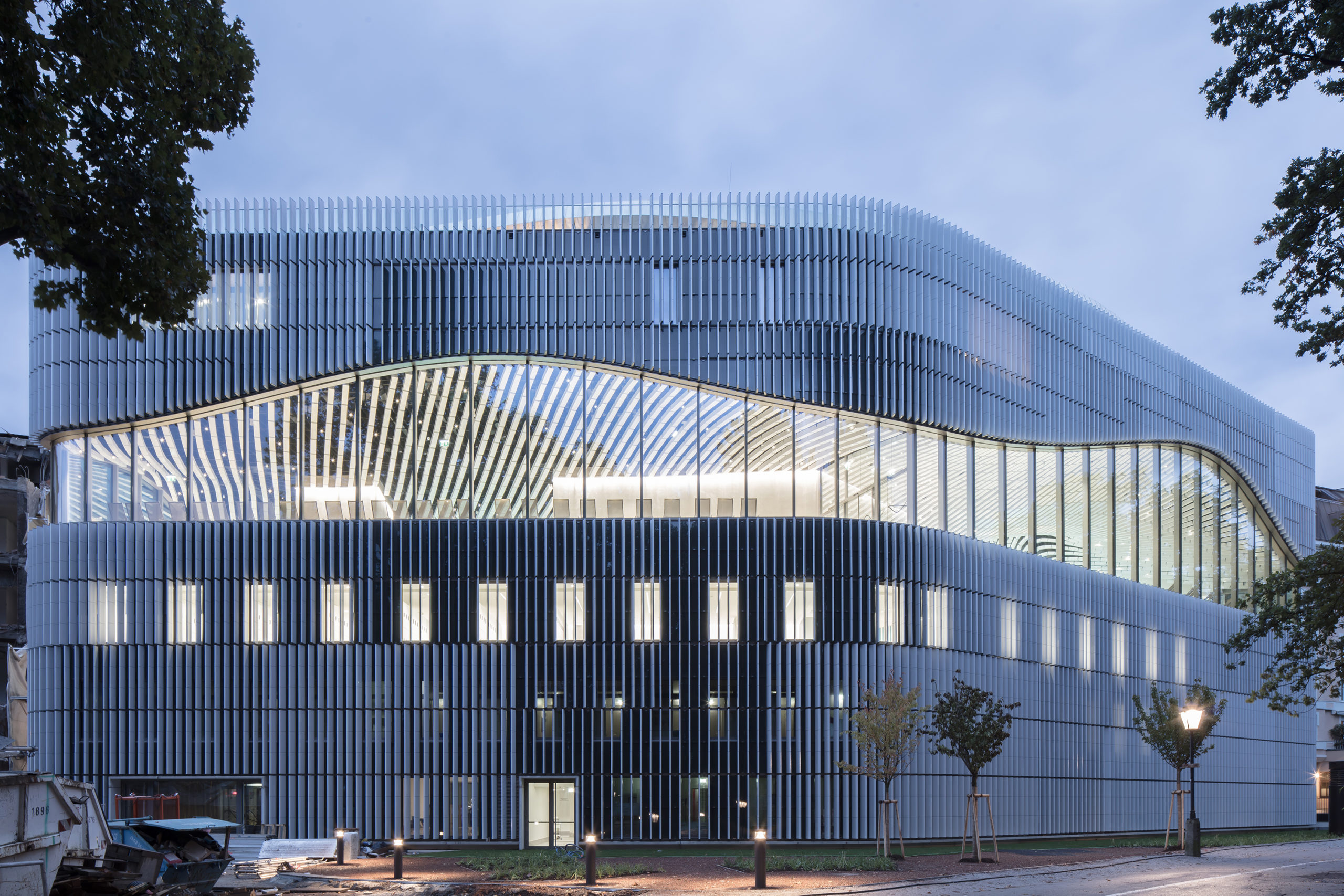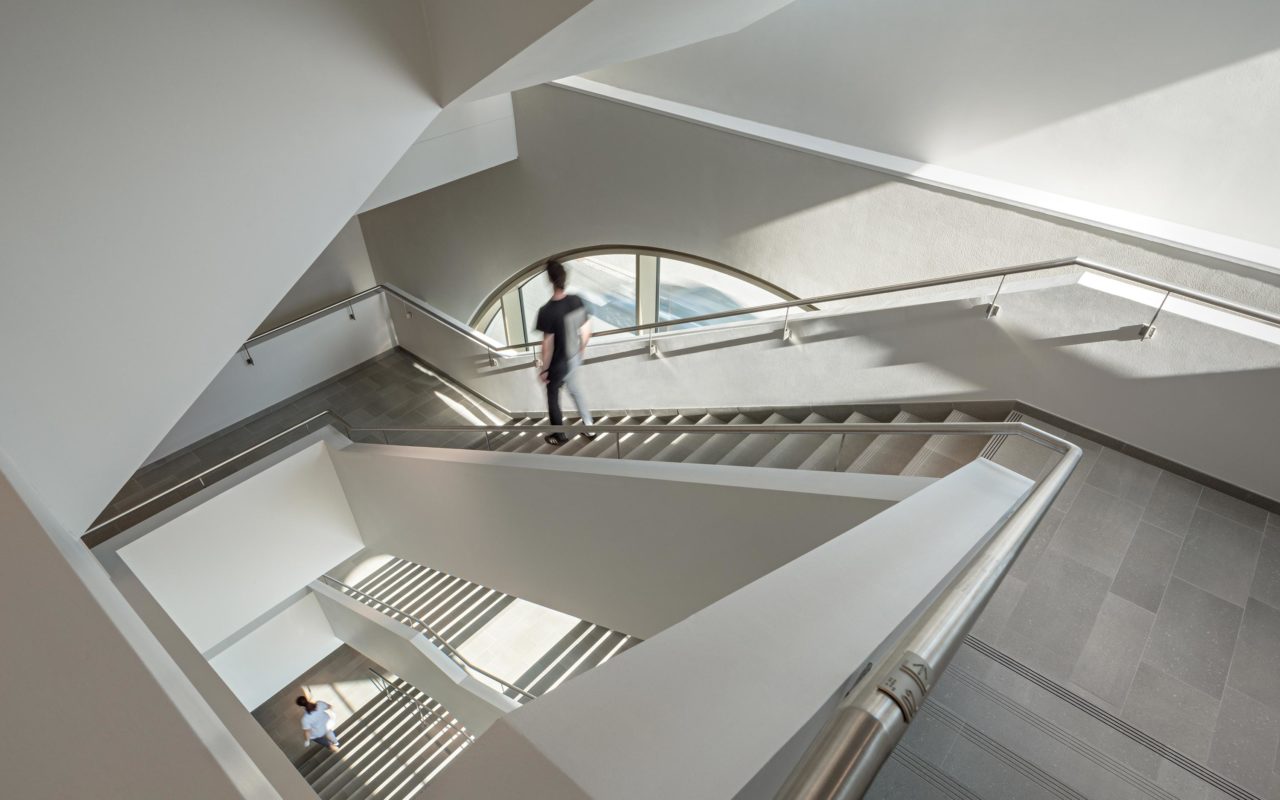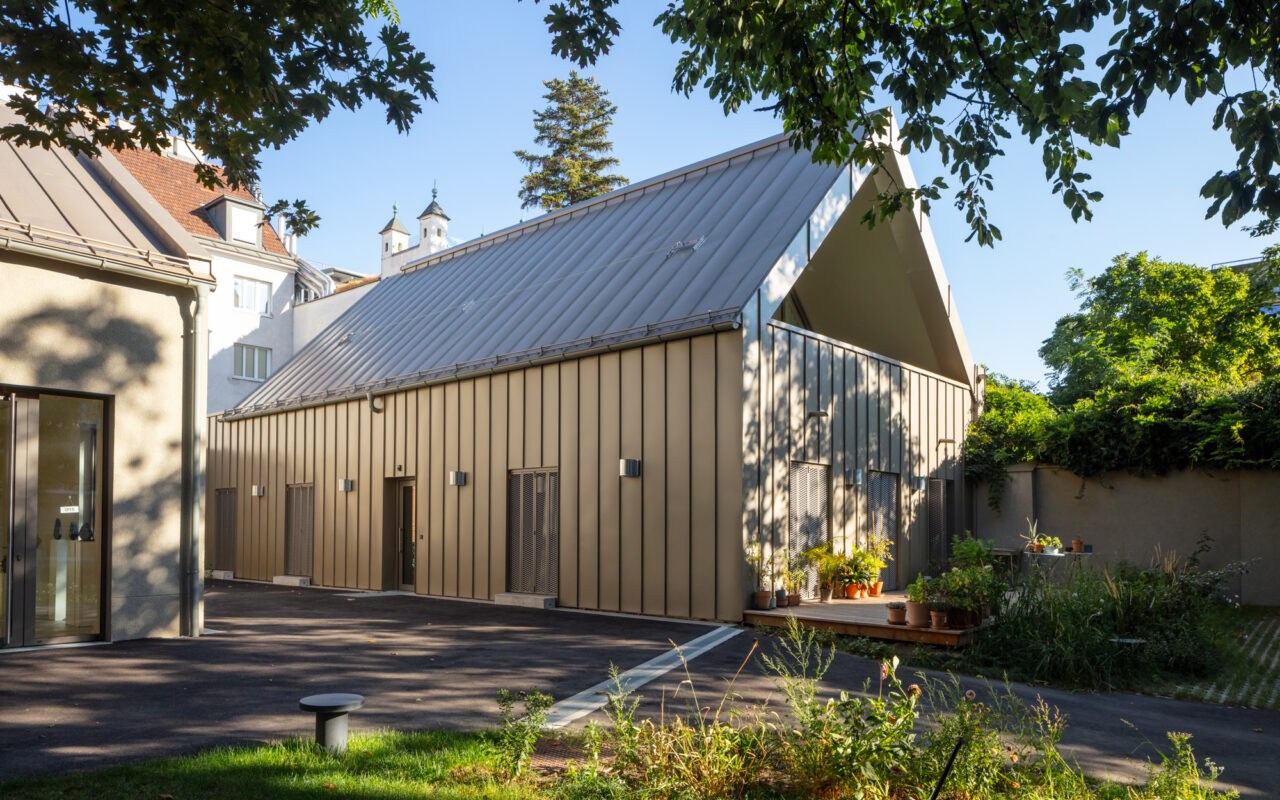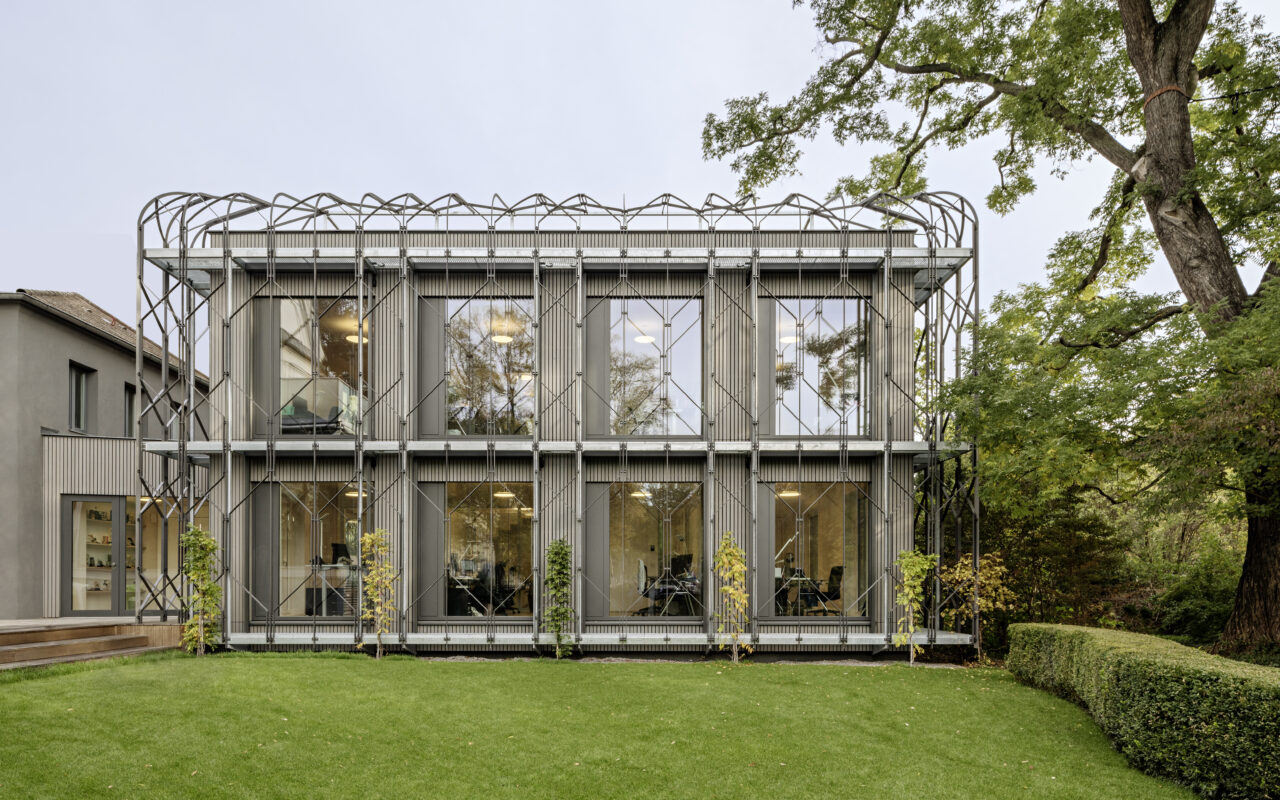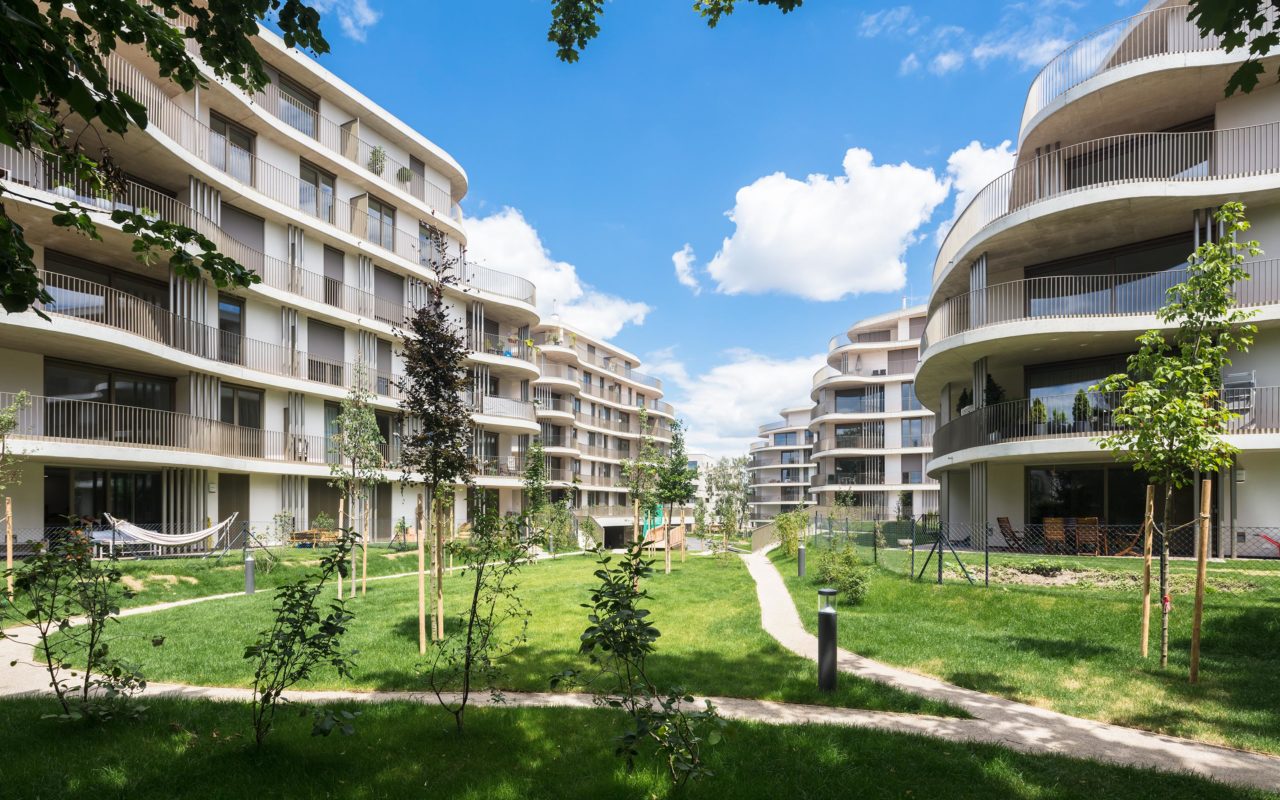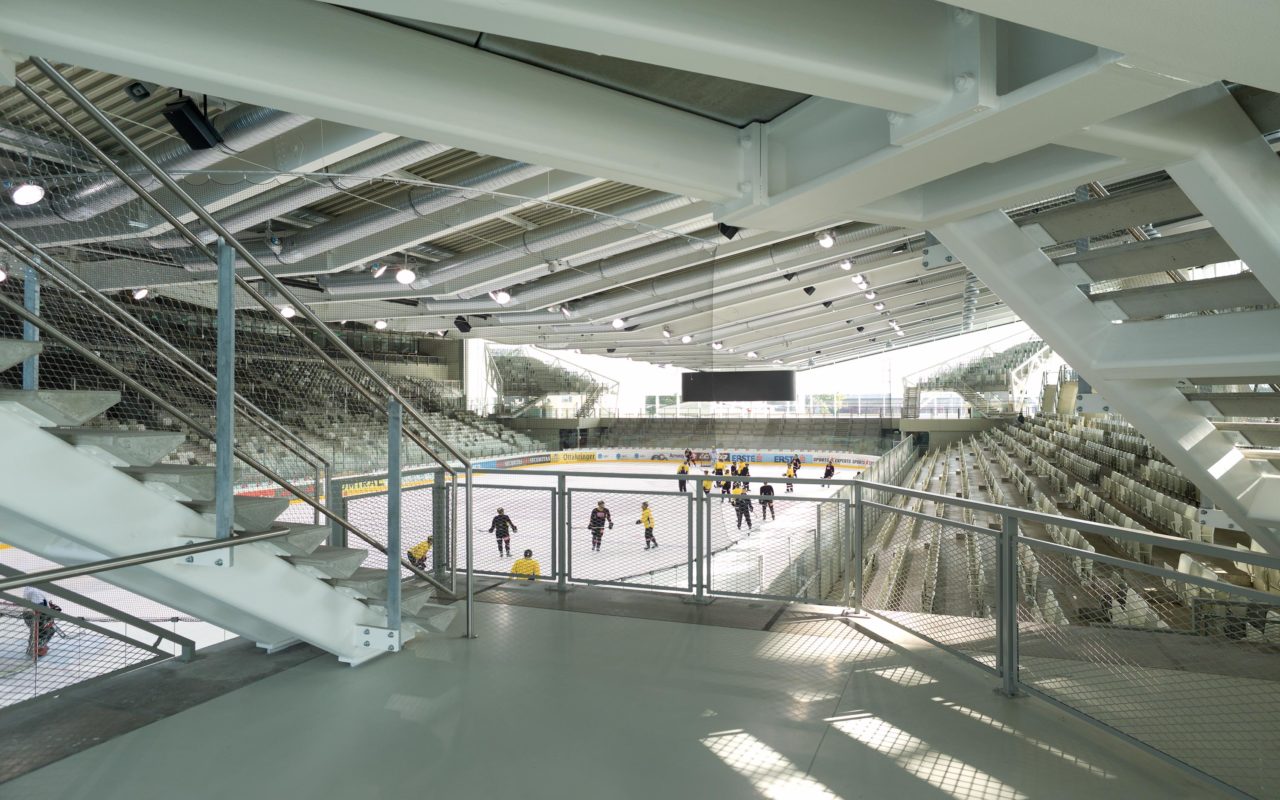PARACELSUS BAD
& KURHAUS
CLIENT: STADTGEMEINDE SALZBURG, KKTB KONGRESS, KURHAUS & TOURISMUS-BETRIEBE STADT SALZBURG
OPEN COMPETITION,
1. Prize
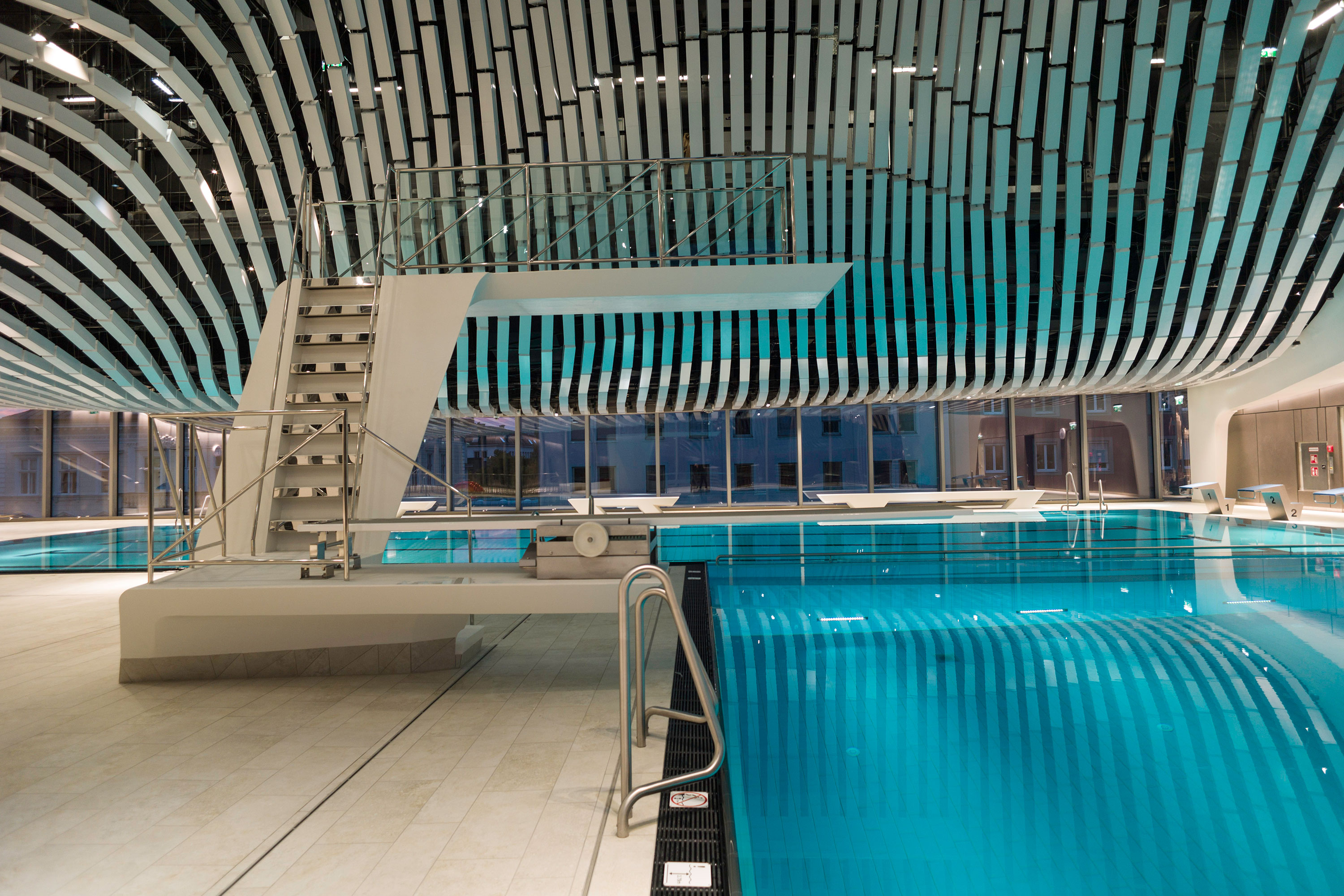
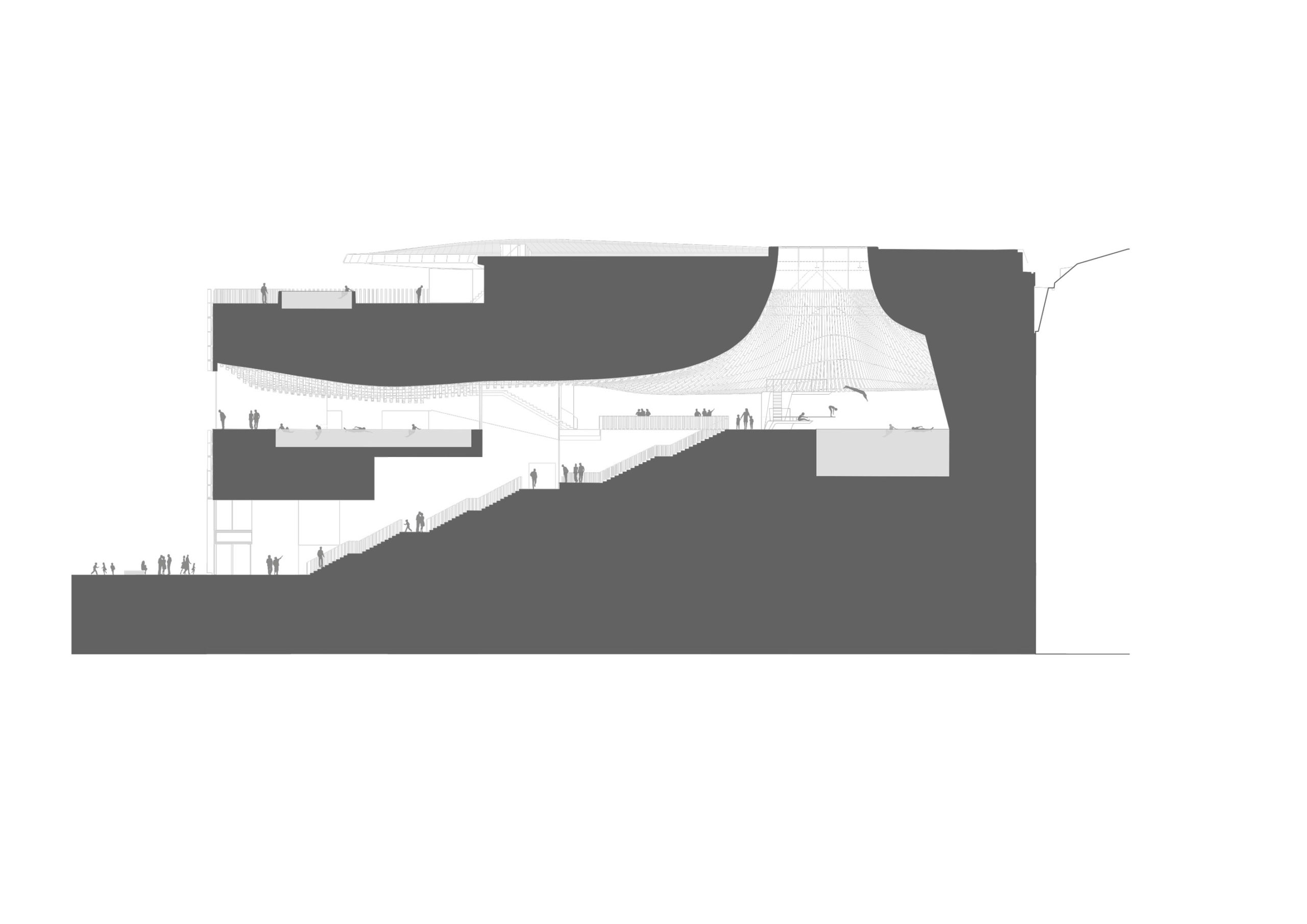
The new Paracelsus Bad & Kurhaus highlights Salzburgs landmarks and mountains
The new public bath represents a visionary architectural project in the city’s historical center. “The building’s outstanding impact is a result of the dialogue between the new spaces and existing surroundings — the baroque gardens known as Mirabellgarten, the old town and the surrounding mountains. The indoor swimming pool is conceived as an expansion of the park on the third floor,” states architect Alfred Berger.
In terms of urban design, the new “Paracelsus Bad & Kurhaus” forms a joint between the late 19th century block structures of Auerspergstraße, the open development along Schwarzstraße, the landscape of the Kurgarten and the Mirabellgarten. The geometry of the building is swivelled towards the park, making a reference to the geometry of the former baroque bastion walls.
Swimming and the City
The “Paracelsus Bad & Kurhaus” was conceived as a three-dimensional landscape with the building’s main elements forming a clearly discernible vertical layering. The introverted plinth contains the spa house and the wardrobes of the bath. The entire roof level, used for the sauna facilities and their spectacular outdoor pool, features a view of the entire city. A layer of ceramic louvers surrounds the “Paracelsus Bad & Kurhaus”, screening it from passersby.
Between these two introverted layers the swimming level is entirely glazed and opens on the trees of the gardens and the city. This transparency underlines the idea of the swimming level as an extension of the Kurgarten ("spa garden") on the third floor, with unforgettable views of the town, the impressive fortress and the mountain peaks in the background.
Architect Tiina Parkkinen: “In our projects, references to the built environment, natural surroundings and the social context are extremely important.”
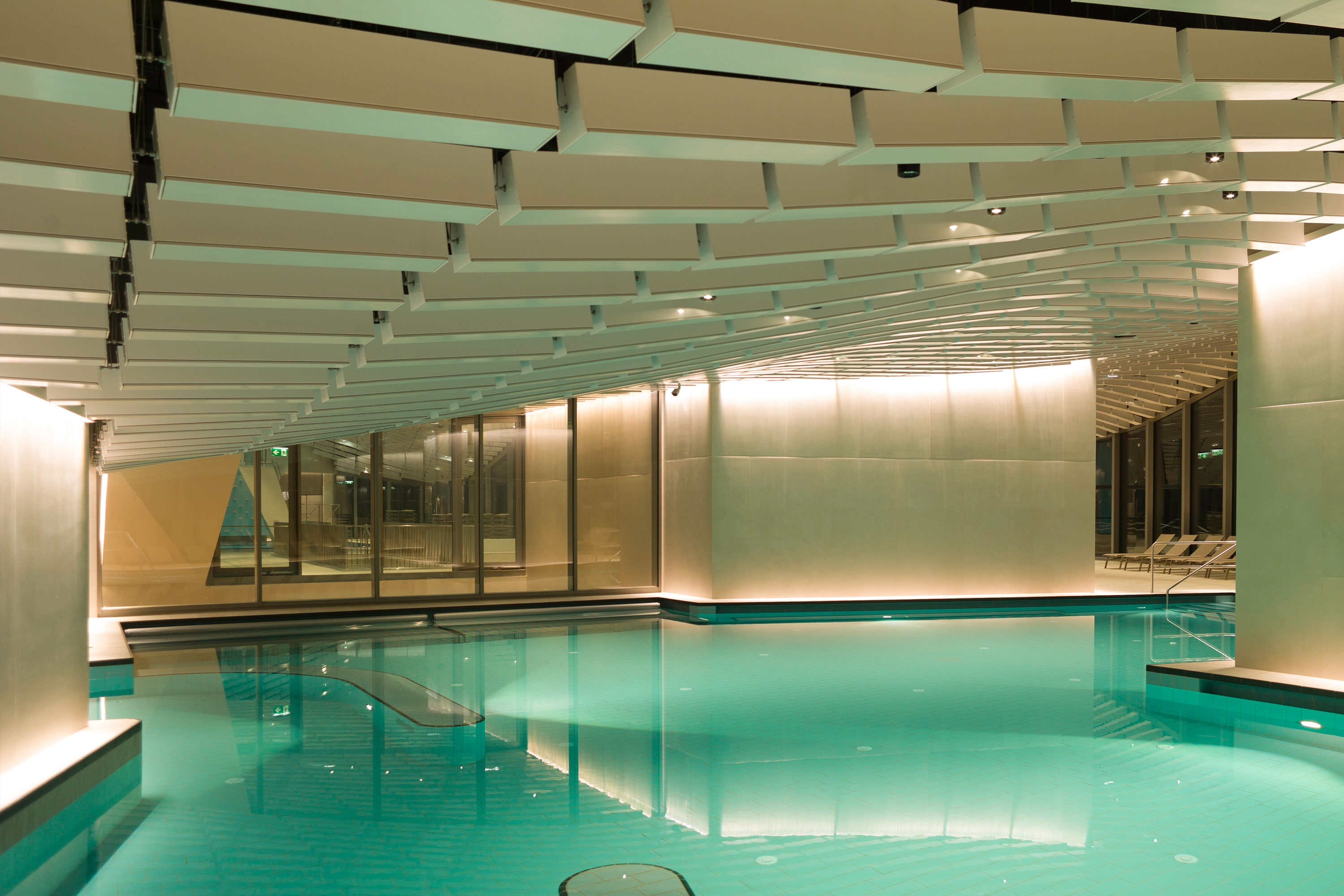

Panoramic View and Surrounding Scenery
A central, linear staircase leads from the main entrance in the west through the three plinth floors in continuous movement to swimming level with its large skylight. The daylight shining through guarantees consistent natural lighting. The swimming level features four different pools, from a sports pool to a diving pool, a kiddie pool and the relaxation pool. A continuous band of large, storey-height glass elements forms the boundary to the outside bringing the urban surroundings’ beauty deep into the space.
The materialization of the waterscape is provided by ceramic surfaces, water and light, bordered from above by the gentle shapes of the wavy ceramic ceiling. The animated ceiling with its different heights underscores the variety to be found in the spatial and atmospheric context.
The Sauna Facilities “Naked Above the City”
The gastronomic and sauna facilities are located at the top of the building. Three saunas face the city with panoramic views, while the central and largest sauna is both, sauna and lounge, focusing on the Pfarrkirche Mülln (Mülln Parish Church). A relaxation zone provides an unobstructed view of the hilly landscape to the North and Maria Plain. In the outdoor pool, the feeling of swimming freely above the roofs of the city reaches its peak. As Architect Alfred Berger states: “Through the visual integration of the city’s treasures the project offers a unique combination of physical relaxation and cultural inspiration.”
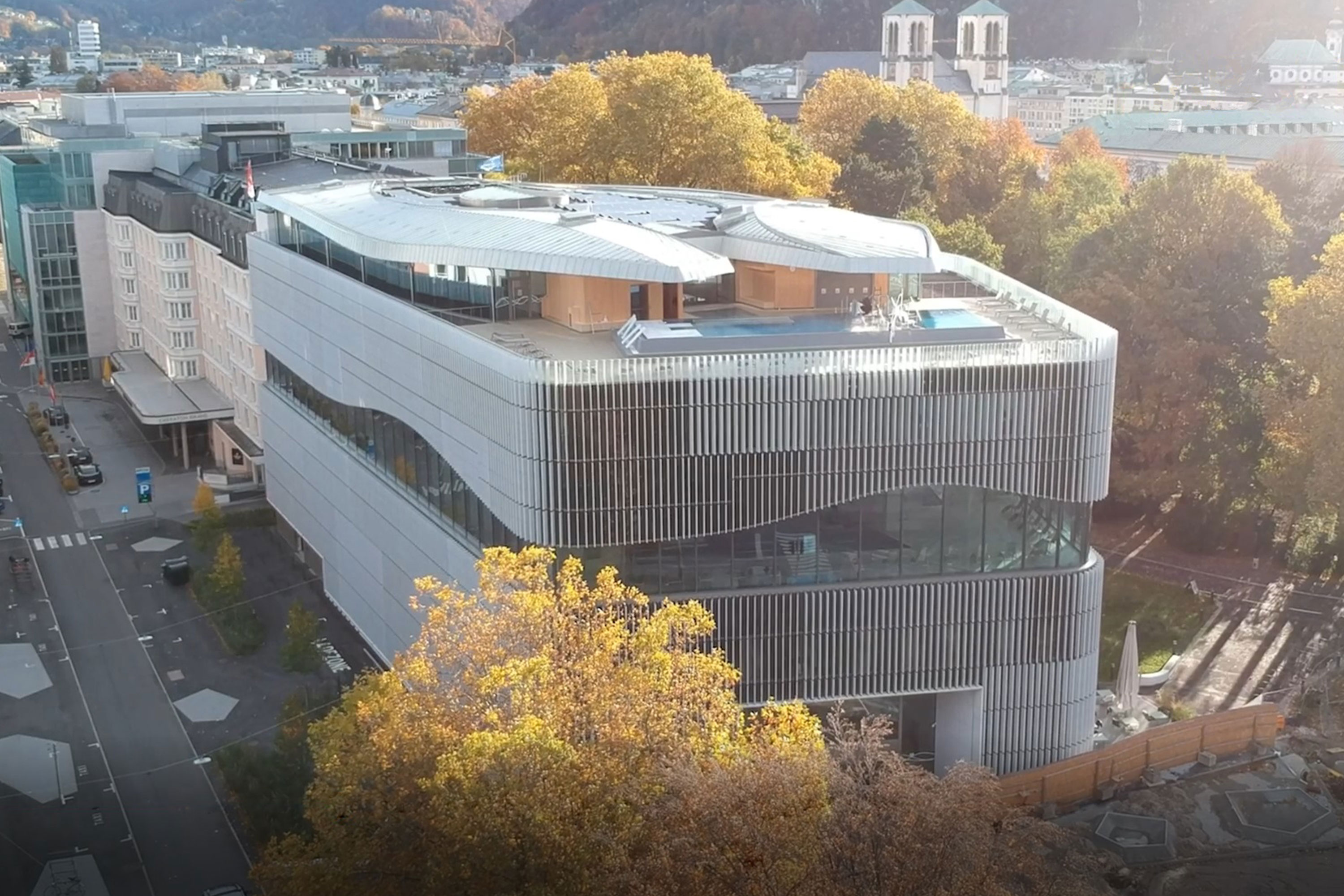
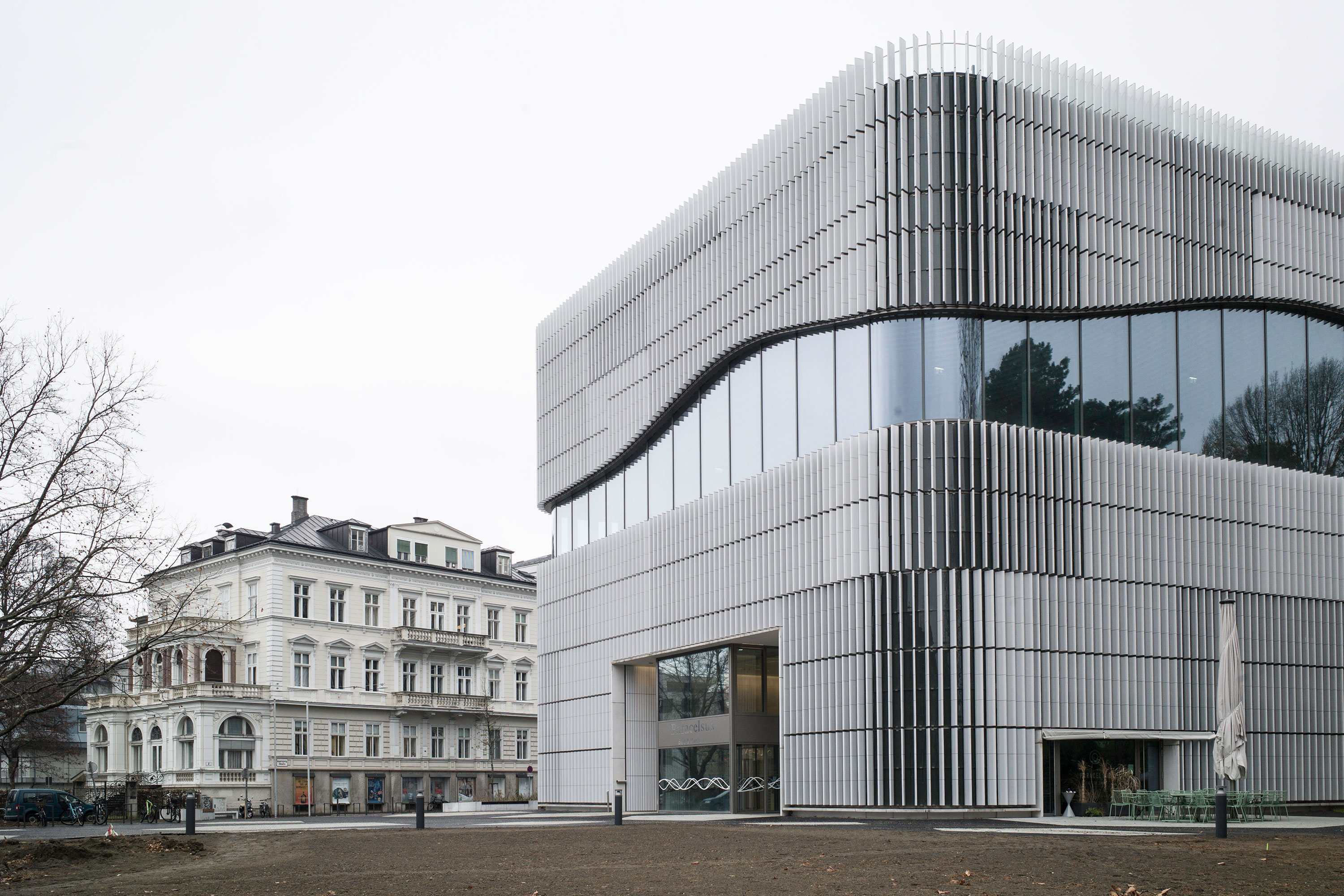
Leader for Sustainability—klimaaktiv GOLD Certification
As a reflection of this standard, project planning aimed for a highly efficient building from the very beginning. A comprehensive sustainability analysis was performed, the first time ever for an indoor pool in Austria. The goal, achieving the highest level of certification, klimaaktiv GOLD, was met. The Ministry of Sustainability and Tourism’s klimaaktiv building standard stands for energy efficiency, ecological quality, comfort and high-quality assurance for realization. Finished objects that have been awarded gold are—in line with the city of Salzburg’s Smart City strategy—pioneers for climate protection and a comprehensive transition to renewable energy.
